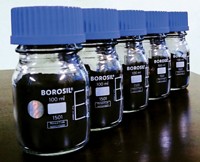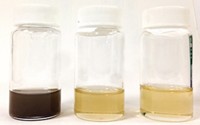Advertisement
Grab your lab coat. Let's get started
Welcome!
Welcome!
Create an account below to get 6 C&EN articles per month, receive newsletters and more - all free.
It seems this is your first time logging in online. Please enter the following information to continue.
As an ACS member you automatically get access to this site. All we need is few more details to create your reading experience.
Not you? Sign in with a different account.
Not you? Sign in with a different account.
ERROR 1
ERROR 1
ERROR 2
ERROR 2
ERROR 2
ERROR 2
ERROR 2
Password and Confirm password must match.
If you have an ACS member number, please enter it here so we can link this account to your membership. (optional)
ERROR 2
ACS values your privacy. By submitting your information, you are gaining access to C&EN and subscribing to our weekly newsletter. We use the information you provide to make your reading experience better, and we will never sell your data to third party members.
2-D Materials
How to make pristine graphene from trash in a flash
Low-cost, efficient heating method turns coal and plastic into high-quality graphene
by Bethany Halford
January 27, 2020

A new low-cost process creates multigram quantities of high-quality graphene from virtually any carbon-based material. By making the 2-D carbon allotrope sustainably on a large scale, the method could lead to graphene being added to concrete or composites to strengthen those materials. As a result, less of those building materials would be needed, reducing their overall carbon footprint, explains Rice University’s James M. Tour, who was one of the project’s leaders.
Although graphene can be made in many different ways, such as through organic synthesis, chemical-vapor deposition, and exfoliation from graphite, these methods either don’t produce large amounts of high-quality graphene or require harsh chemicals or high-energy processes. A team led by Tour, along with Rice’s Boris I. Yakobson and Rouzbeh Shahsavari, discovered they could use flash Joule heating, a low-cost, energy efficient process, to transform coal, food waste, and plastic into multigram quantities of high-quality graphene in less than a second (Nature 2020, DOI: 10.1038/s41586-020-1938-0).
Tour says that Duy X. Luong, a graduate student in Tour’s lab, read a paper about using flash Joule heating to make different phases of materials and decided to see what it would do with carbon black. “There was a little poof, a little flash,” Tour says and Raman spectroscopic analysis of the resulting black material revealed Luong had turned the carbon black into graphene.

“I knew immediately the value,” Tour says of the discovery. He says he realized if the process worked with carbon black—which has a structure that’s quite different from graphene—it would probably work with any carbon material. They tried the process successfully with of all sorts of things, including pistachio shells, potato skins, rubber tires, and used polyethylene terephthalate plastic. “With optimization, you can make the cleanest graphene that’s ever been made,” Tour says.
The process involves lightly compressing carbon-based material inside a quartz or ceramic tube between two electrodes. This apparatus is then zapped with a high voltage electrical discharge from a capacitor bank, which heats the carbonaceous material to temperatures in excess of 3,000 K in less than a second. The process converts the amorphous carbon into graphene while all other chemicals escape as volatile material. Because the graphene is produced so quickly, its layers don’t have time to align via electrostatics, making it easy to extract individual graphene sheets.
In the paper, the researchers report their largest graphene synthesis as 1 g per flash, but Tour says they’ve subsequently made 5 g per flash in the lab and currently have a grant from the US Department of Energy to scale up to 100 g per flash.
Jiaxing Huang, a Northwestern University professor who studies materials processing, notes that many possible graphene applications would require high quality material that’s produced in scalable and sustainable ways, which he says is challenging. “Many demonstrated graphene applications are experiencing the ‘trough of disillusionment’ because of these challenges in synthesis.” The Rice team have managed to overcome the challenges, he says. “This is a beautiful piece of work.”





Join the conversation
Contact the reporter
Submit a Letter to the Editor for publication
Engage with us on Twitter